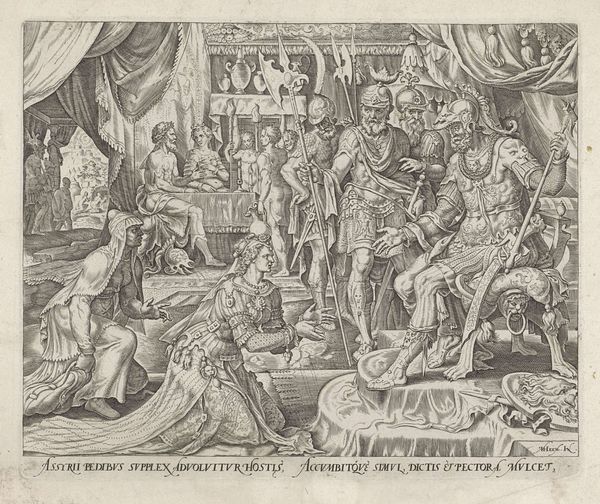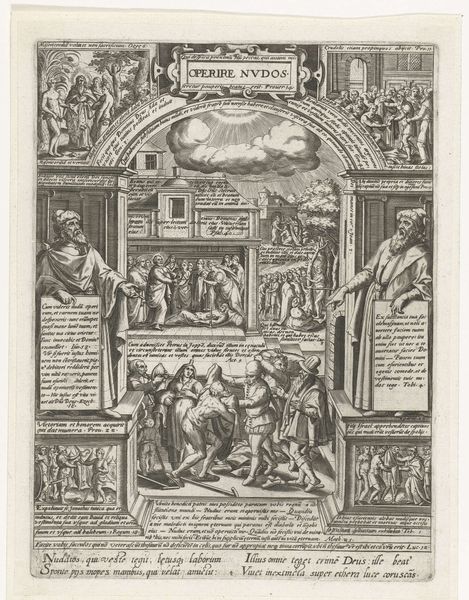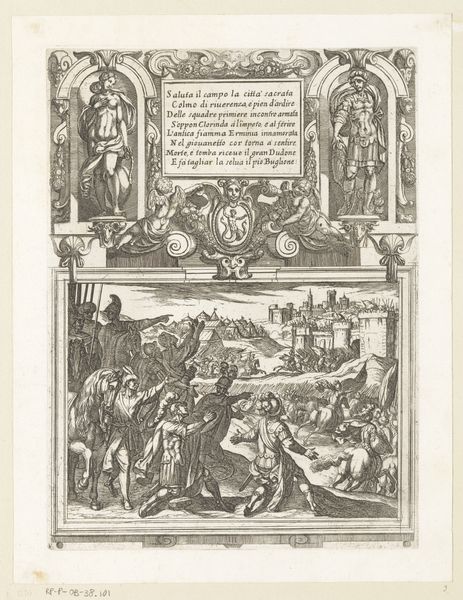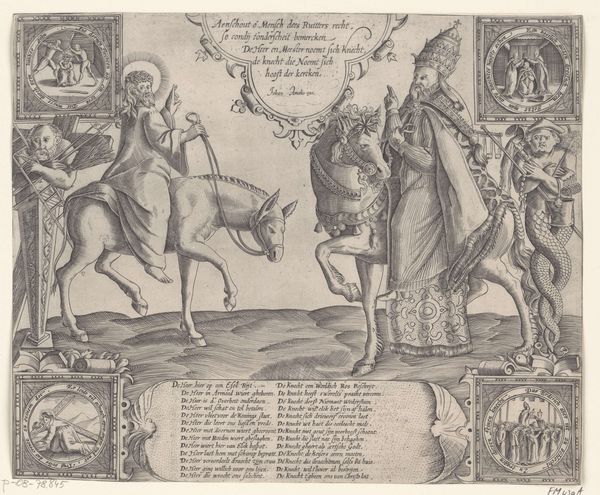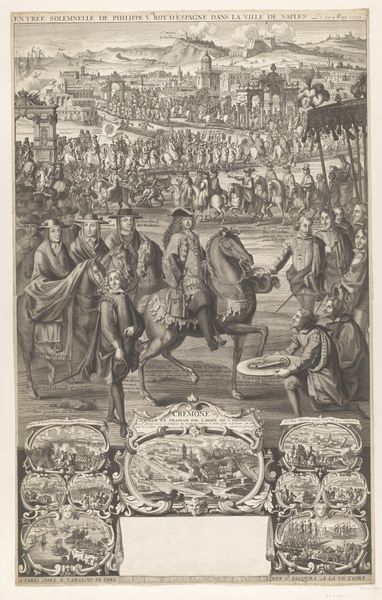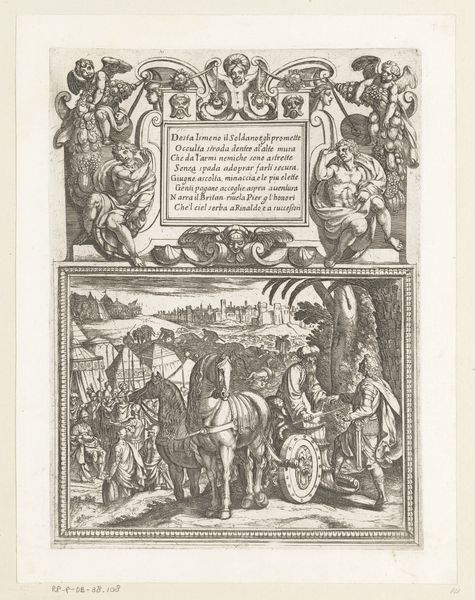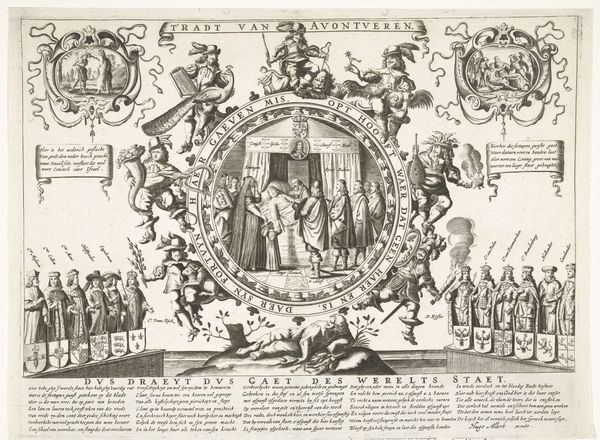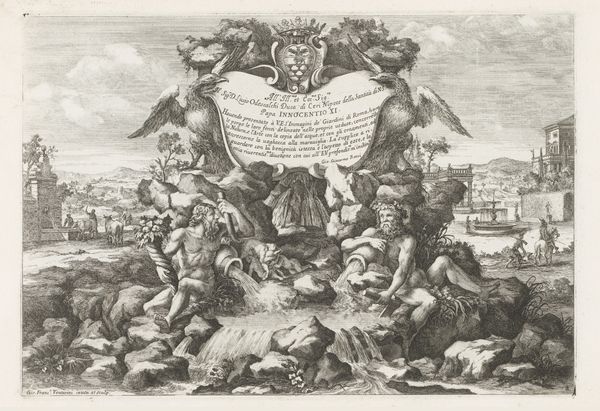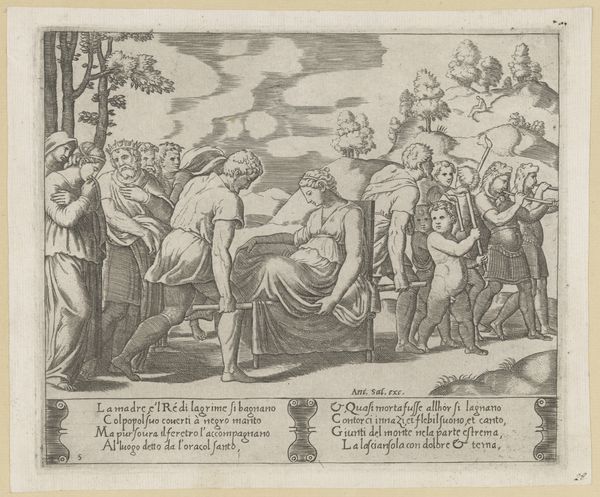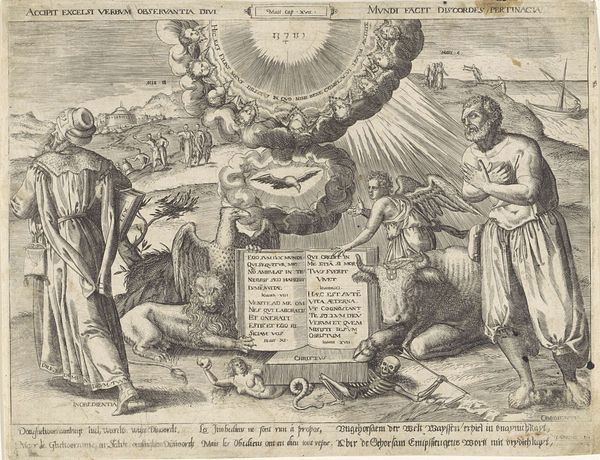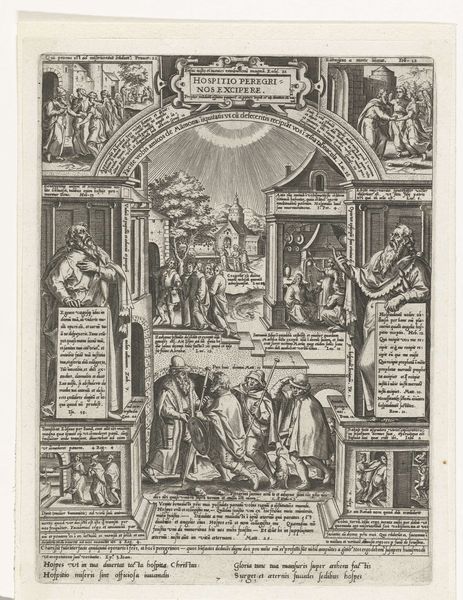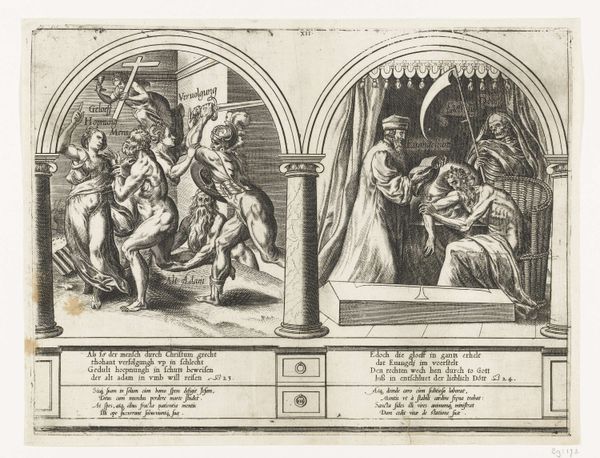
Oordeel van graaf Willem III over de baljuw van Zuid-Holland, 1336 Possibly 1598 - 1725
0:00
0:00
print, etching, engraving
#
narrative-art
#
dutch-golden-age
# print
#
etching
#
figuration
#
line
#
history-painting
#
engraving
Dimensions: height 620 mm, width 1005 mm
Copyright: Rijks Museum: Open Domain
Curator: Look at this fantastically detailed print; it is believed to be created sometime between 1598 and 1725. It’s called 'Oordeel van graaf Willem III over de baljuw van Zuid-Holland, 1336,' likely done by Bartholomeus Willemsz. Dolendo, though the exact attribution remains a mystery. The scenes depicted are striking. What is your initial impression of this piece? Editor: Initially, I'm struck by the sheer density and narrative layering. It feels… crammed, almost like a tapestry woven with too many stories competing for attention. And everything is rendered in such exacting detail, yet there’s a certain flatness. Curator: Precisely. The composition follows a historical approach of the time: It showcases multiple moments of the narrative simultaneously, surrounding the central scene of justice being meted out by Count William III. You have to scan across it to unravel the whole tale. Visually it almost becomes an accusation about power! Editor: Definitely, it echoes systems of power. This isn't just a depiction of historical events; it’s an early piece of propaganda. By illustrating this instance of justice, it implicitly makes a commentary on ideal governance and raises expectations from those in power. The little scenes surrounding the central judgment seem like attempts to fully illustrate his authority! Curator: That is what makes prints so incredibly valuable. In this instance the choice of the artist and patron to produce in a popular form gives it an appeal across class boundaries! These prints made grand pronouncements of moral virtue that every household could witness and maybe reflect on... Editor: Absolutely. The decision to portray the scales of justice is quite overt—that combined with other symbolic features emphasizes law, morality and justice. Curator: I wonder if the engraver was subtly making an anti-establishment argument by including the scales of justice. Editor: Perhaps even calling for a greater balance in representation. Either way, that element is interesting to me. Curator: Absolutely. I keep wondering about the lion sprawled out at the feet of the royalty at the bottom of the composition. Is that an act of submission or more symbolic? Editor: Great question, I hadn't considered that lion, such great tension in that symbolism and placement... In any case, seeing it has added another layer to my interpretation!
Comments
No comments
Be the first to comment and join the conversation on the ultimate creative platform.
